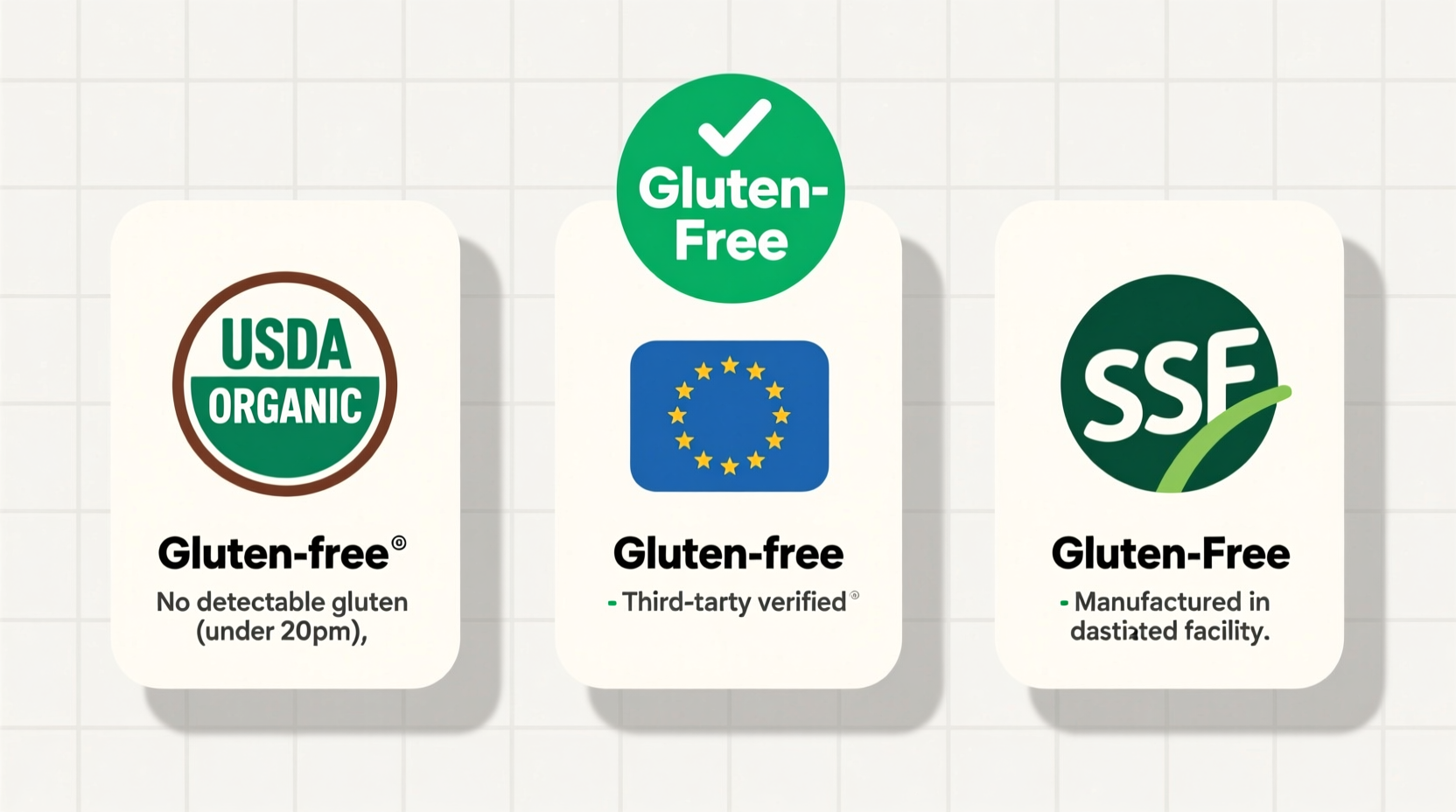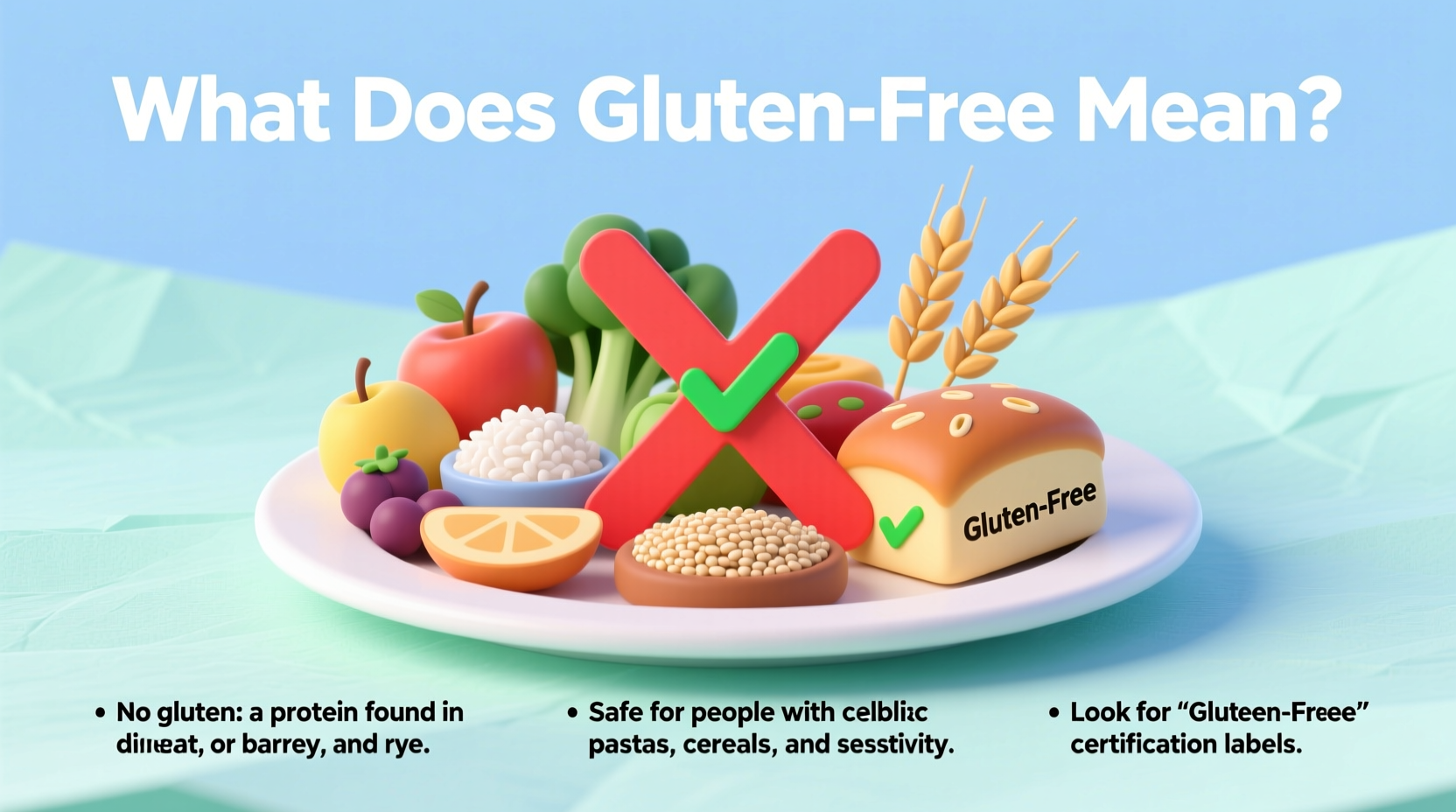Understanding what "gluten free" truly means can transform your grocery shopping, dining experiences, and health outcomes. Whether you're newly diagnosed with celiac disease, cooking for someone with gluten sensitivity, or simply navigating today's complex food labels, this guide delivers the precise information you need to make confident choices.
The Essential Definition of Gluten-Free
When a food product carries a "gluten-free" label, it means the manufacturer has verified that the product contains no detectable gluten from wheat, barley, rye, or their crossbred hybrids like triticale. Crucially, certified gluten-free products must contain less than 20 parts per million (ppm) of gluten—the threshold scientifically determined to be safe for nearly all people with celiac disease.
Gluten itself refers to the protein composite found in certain grains that gives dough its elastic texture. For the approximately 1% of the global population with celiac disease, even microscopic amounts can trigger an autoimmune response that damages the small intestine. Non-celiac gluten sensitivity affects an estimated 6-10% of people, causing similar digestive and systemic symptoms.

How Gluten-Free Standards Protect Consumers
The FDA's gluten-free labeling rule, implemented in 2014, created uniform standards that manufacturers must follow when using this claim. Before this regulation, inconsistent labeling practices created confusion and potential health risks for consumers. Today's standards require:
- Complete absence of gluten-containing grains
- Less than 20 ppm gluten in finished products
- Verification through testing protocols
- Prevention of cross-contact during manufacturing
| Regulatory Body | Gluten Threshold | Key Requirements |
|---|---|---|
| FDA (USA) | <20 ppm | Must not contain any gluten grains; testing verification required |
| Codex Alimentarius | <20 ppm | International standard adopted by 100+ countries |
| European Union | <20 ppm | "Very low gluten" category at 21-100 ppm with specific labeling |
| Canada | <20 ppm | Requires certification from accredited body |
Common Misunderstandings About Gluten-Free Labels
Several misconceptions persist about what "gluten free" actually means in practical terms. Understanding these distinctions prevents potentially harmful mistakes:
"Wheat-Free" Doesn't Mean Gluten-Free
Products labeled "wheat-free" may still contain barley, rye, or other gluten sources. Always check for the specific "gluten-free" certification if you have celiac disease or severe sensitivity.
The 20 ppm Threshold Has Scientific Basis
Research published in the journal Gastroenterology confirms that most people with celiac disease can tolerate up to 20 ppm of gluten without intestinal damage. This level represents the practical detection limit of current testing methods while ensuring safety.
Natural Gluten-Free Foods Require Verification
While rice, corn, and quinoa are naturally gluten-free, they can become contaminated during growing, processing, or packaging. Look for certified gluten-free versions of these products if you have celiac disease.
Practical Guidance for Identifying Safe Products
When shopping for gluten-free foods, follow these evidence-based strategies to ensure safety:
Read Labels Systematically
Check three critical areas on food packaging:
- The front label claim ("gluten-free")
- The ingredients list for hidden gluten sources (malt, hydrolyzed wheat protein)
- Allergen statements ("may contain wheat" warnings)
Recognize Trusted Certification Symbols
Third-party certifications provide additional verification beyond manufacturer claims. Look for these recognized symbols:
- Gluten-Free Certification Organization (GFCO) seal
- National Celiac Association's Certified Gluten-Free
- CSA Certified Gluten Free
Understand Cross-Contact Risks
Even products made from naturally gluten-free ingredients can become contaminated. Manufacturers following good manufacturing practices (GMPs) implement strict protocols to prevent cross-contact during production. When in doubt, contact the manufacturer directly about their testing procedures.
When Gluten-Free Labeling Doesn't Apply
It's important to recognize the limitations of gluten-free labeling. The FDA standards apply specifically to packaged foods, but certain contexts require additional caution:
- Restaurant meals: No standardized testing exists for restaurant-prepared foods
- Medications and supplements: Different regulatory standards apply
- Farmers' market products: Artisanal producers may lack certification
- Alcoholic beverages: Distilled spirits have different labeling rules
For restaurant dining, always communicate your needs clearly and ask specific questions about preparation methods. The Gluten Intolerance Group reports that 30% of gluten exposure occurs outside the home, often due to inadequate kitchen protocols.
Making Informed Choices
Understanding what "gluten free" truly means empowers you to navigate food choices with confidence. Remember that certified gluten-free products undergo rigorous testing to ensure safety, while naturally gluten-free foods require careful verification. When uncertainty exists, contact manufacturers directly for their testing protocols and facility practices.
The evolution of gluten-free standards since the FDA's 2014 ruling has significantly improved labeling consistency and consumer protection. As research continues to refine our understanding of gluten thresholds, these standards will likely become even more precise, further enhancing safety for those with gluten-related disorders.
Frequently Asked Questions
Can products labeled gluten-free still contain trace amounts of gluten?
Yes, gluten-free products can contain up to 20 parts per million (ppm) of gluten, which is the lowest level reliably detectable by testing equipment and considered safe for nearly all people with celiac disease according to current scientific evidence.
What's the difference between gluten-free and certified gluten-free?
"Gluten-free" is a claim any manufacturer can make, while "certified gluten-free" means an independent organization has verified the product meets strict standards through regular testing and facility inspections, providing additional assurance of safety.
Do oats need to be labeled gluten-free to be safe?
Yes, regular oats are frequently contaminated with wheat during growing and processing. Only oats specifically labeled "gluten-free" have been processed in dedicated facilities and tested to ensure they contain less than 20 ppm of gluten, making them safe for most people with celiac disease.
How can I verify if a restaurant's gluten-free menu is truly safe?
Ask specific questions about their preparation protocols: whether they have dedicated fryers and cooking surfaces, how they prevent cross-contact, staff training procedures, and if they source certified gluten-free ingredients. Reputable establishments will have clear answers to these safety concerns.
Why do some people react to products labeled gluten-free?
Some individuals may have extreme sensitivity beyond the 20 ppm threshold, while others might react to other ingredients like FODMAPs. In some cases, products may have become contaminated after packaging or the individual may have additional food sensitivities that require further dietary modification.











 浙公网安备
33010002000092号
浙公网安备
33010002000092号 浙B2-20120091-4
浙B2-20120091-4